
Stevia rebaudiana
Cultivation, care, harvest & use
The plant Stevia rebaudiana
The plant Stevia comes originally from South America, more precisely from Paraguay. The perennial herb is also known as “sweet leaf”, “honey herb”, “sweet herb of Paraguay” or “sweetest plant in the world”. In this article you will read everything worth knowing about the natural sweetener Stevia.
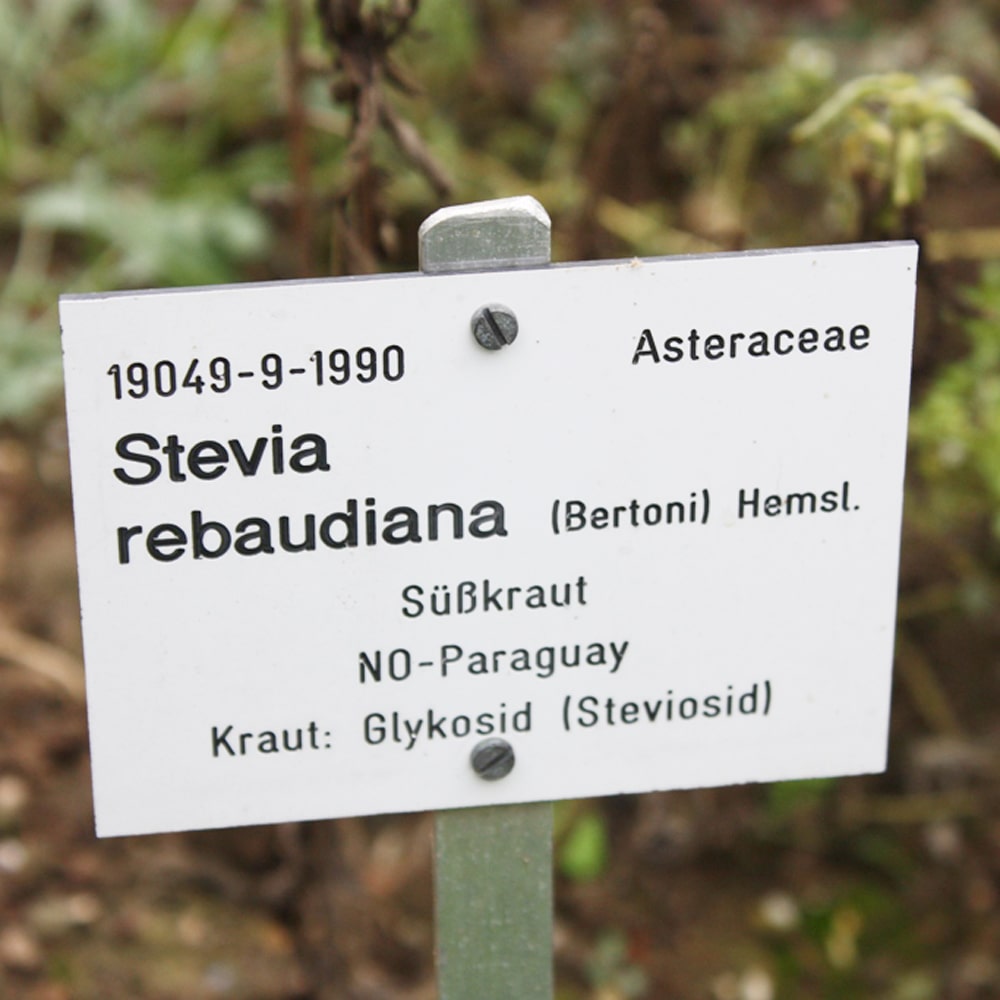
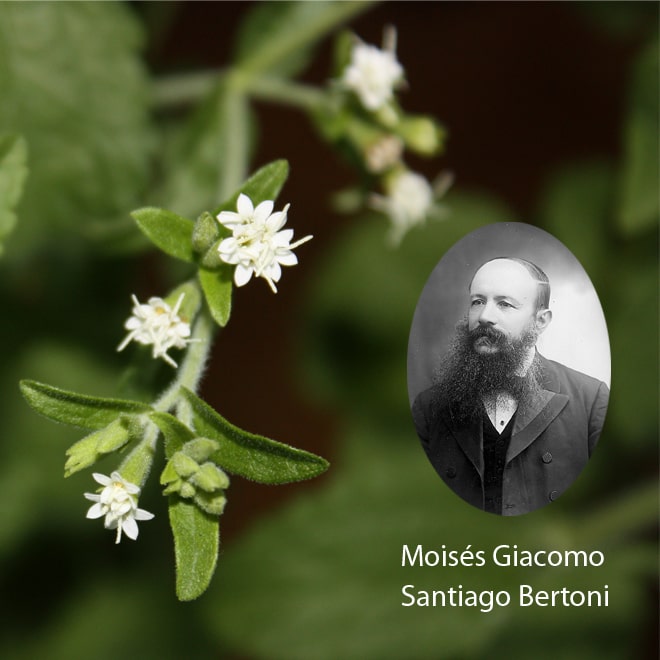
Origin
The sweet Stevia plant originally comes from Paraguay in South America. The indigenous people there have been using it as a sweetener for mate for centuries. In addition to its botanical name, the plant also has other names such as “sweet leaf”, “honey herb”, “sweet herb of Paraguay” or “sweetest plant in the world”. Stevia rebaudiana belongs to the genus Stevia. However, no other Stevia can be used as a sweetener.
It was not until the 16th century, with the Spanish colonisation journeys, that the plant also reached Europe. It was not until three centuries later, however, that it was scientifically investigated by the Swiss botanist Moisés Santiago. Because the leaves of Stevia rebaudiana are very sweet, but its ingredients contain no calories, the herb has become increasingly popular as a sweetener in recent years.
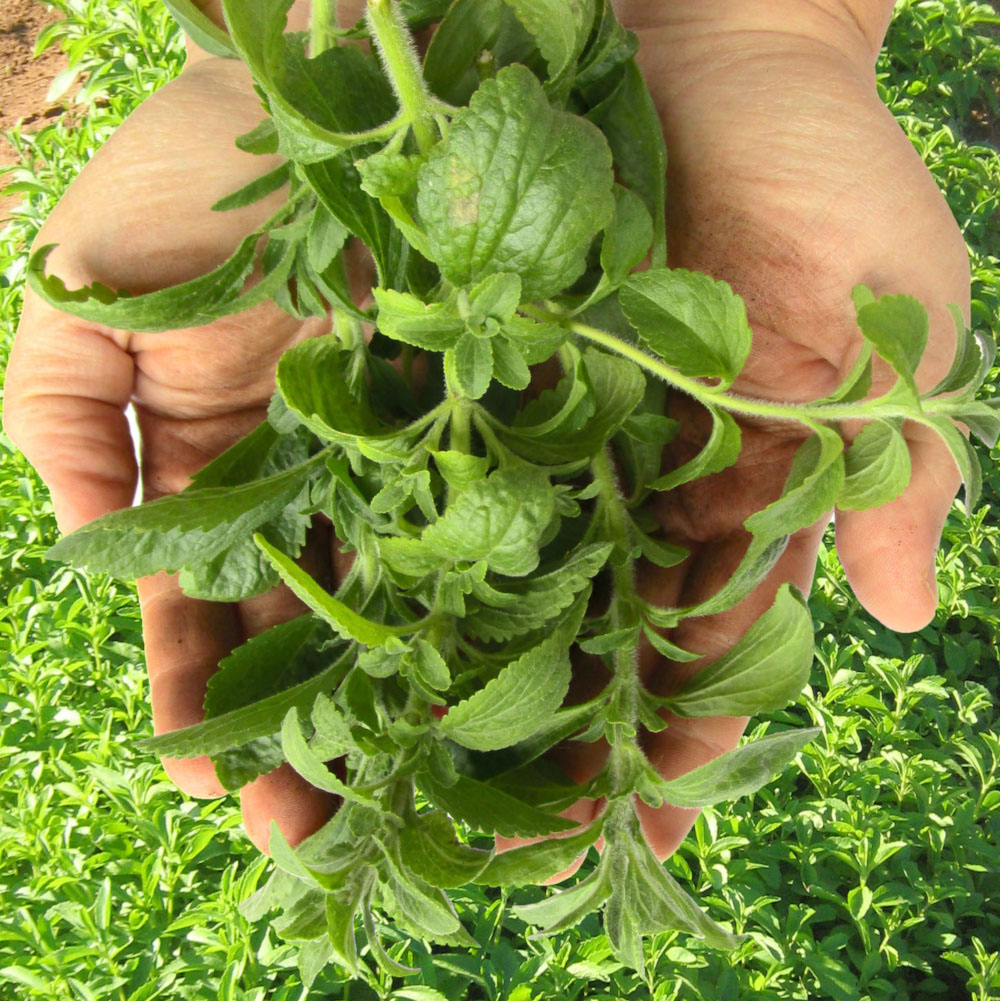
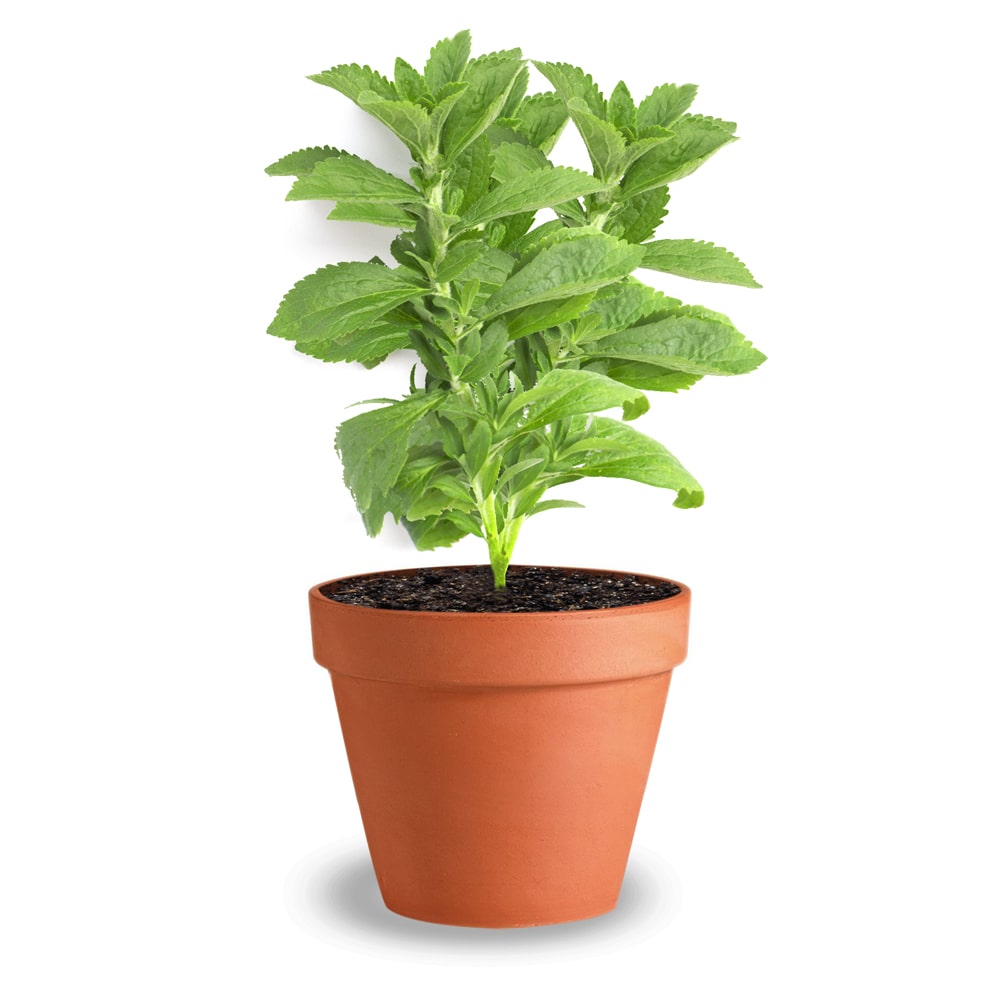
Stevia young plant with beautiful bushy growth.
Growth
The maximum growth height of Stevia rebaudiana is around 60 to 120 centimetres. The herb grows bushy on a base of shallow storage roots. As its ages, the shoots of the plant become lignified.
Leaves
The leaves of the stevia plant have an oval shape, a serrated edge and a diameter of up to five centimetres. The leaves are formed in opposite directions on the stem. Young leaves still have a light green colour, while they become darker and darker over time. The glands, which contain the sweet ingredient stevioside, can only be seen under the microscope.
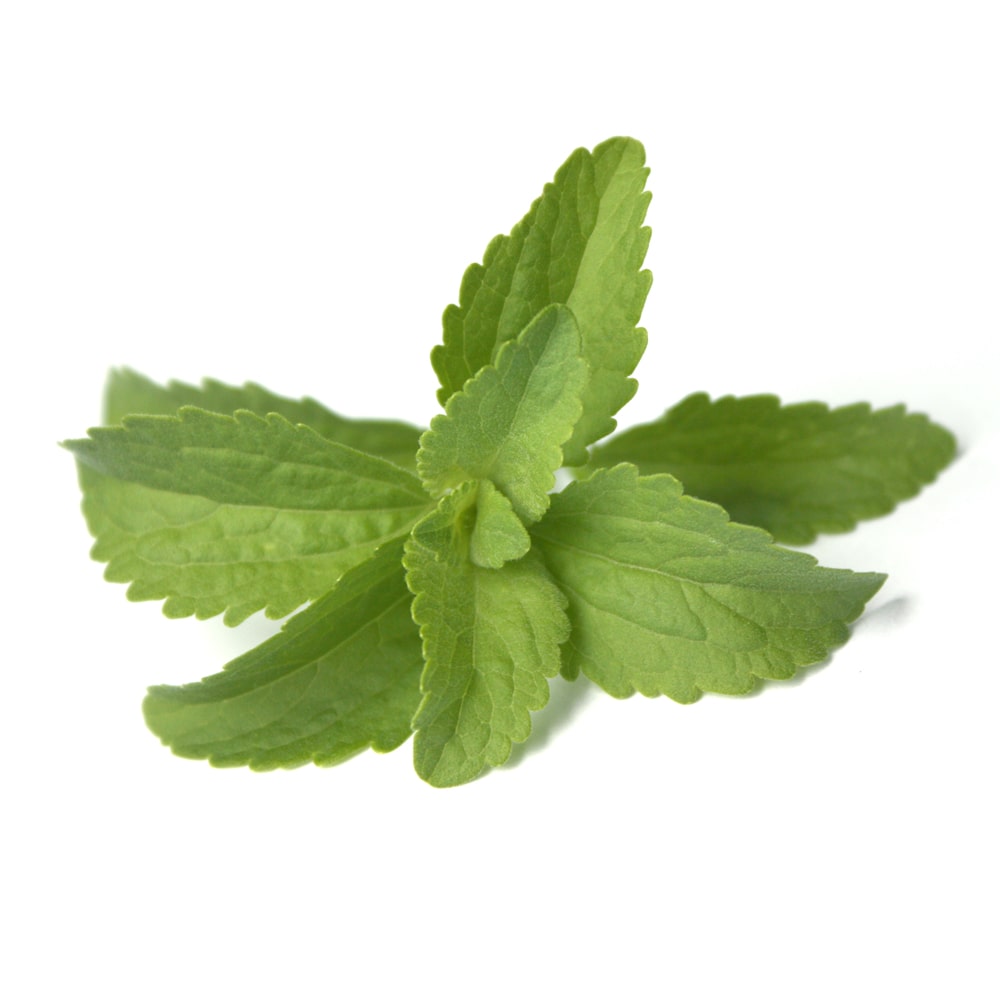
The leaf of the Stevia rebaudiana plant.
The shape and colour of Stevia leaves look very similar to mint leaves.
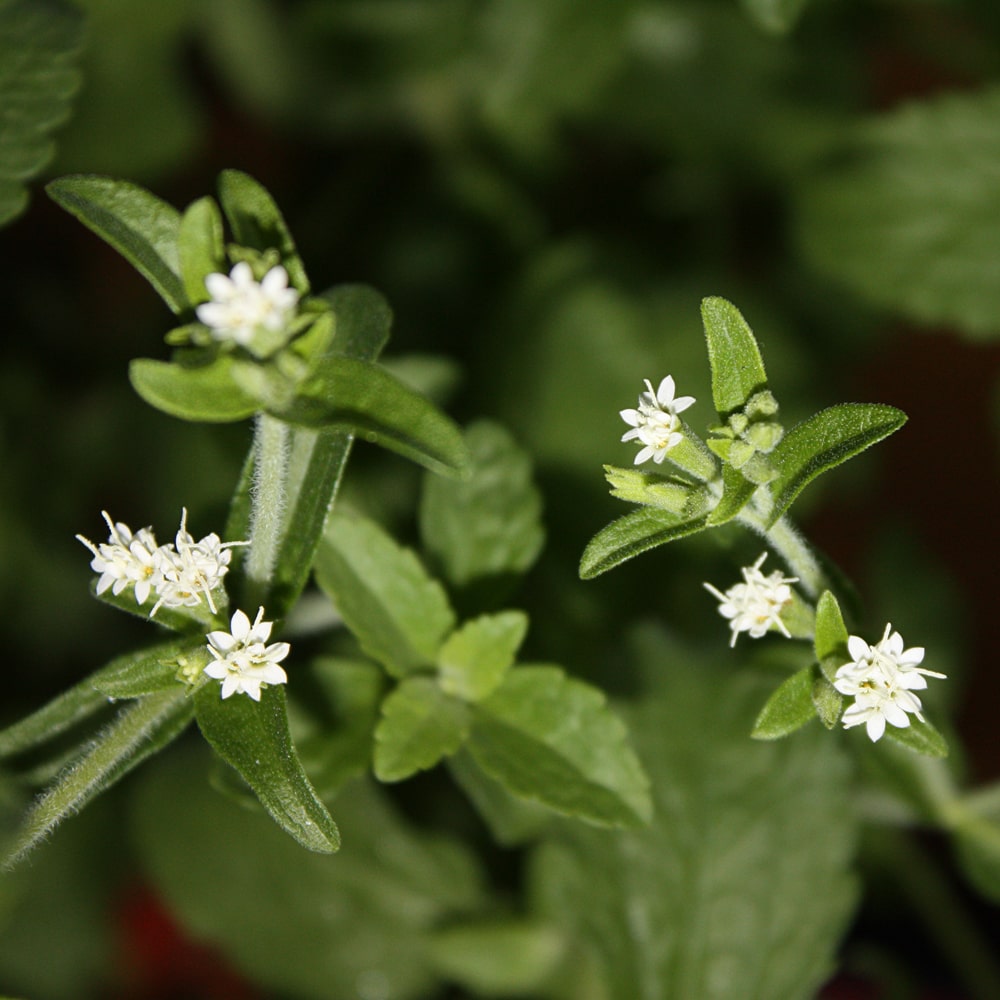
Stevia flowers, the small, terminal flowers of the stevia plant only form in late summer.
Flowers
The Stevia rebaudiana plant is placed under the composite flowers. During the flowering period it develops small, white, cream-coloured and terminal flowers. The individual flowers pollinate themselves either by wind or insects. One plant is able to develop up to 150 flowers.
Location and substrate
At its place of origin, the Stevia plant grows in the open air. Here in Germany it is also possible to grow the plant outdoors, provided that it is brought into the house for wintering. This is essential, as it is not a hardy plant. The easiest way to cultivate a Stevia plant is in a large pot or even better in a greenhouse. If the temperatures here do not drop below 18°C even in winter, then year-round cultivation is also possible. The plant should be grown in a sunny to semi-shady place. To avoid waterlogging, a substrate of sand and clay should be used.
Nevertheless, it is important to ensure that Stevia rebaudiana has enough water available, as it is particularly sensitive to drought. Over-fertilised soil or normal potting soil is not suitable. There is a risk of fungal diseases or falling ill. A well-drained, nutrient-poor herbal soil or just normal garden soil mixed with a little sand is sufficient as a substrate.
Even though Stevia is a relatively adaptable plant, you should make sure that the soil is not too cold and that the place where the plant stands is not too windy. Strong winds can cause the long shoots of the Stevia plant to break. The best place for this is, for example, a place directly on the wall of the house.
Sowing and planting
Stevia seeds are so-called light germs. They should be sown from April onwards, either in propagation trays on the windowsill or in a cold frame. It is important that the seeds are only lightly covered with soil and are not pressed down completely. If the ambient temperature is constantly around 22 degrees, the first seedlings should be visible after a good 10 days.
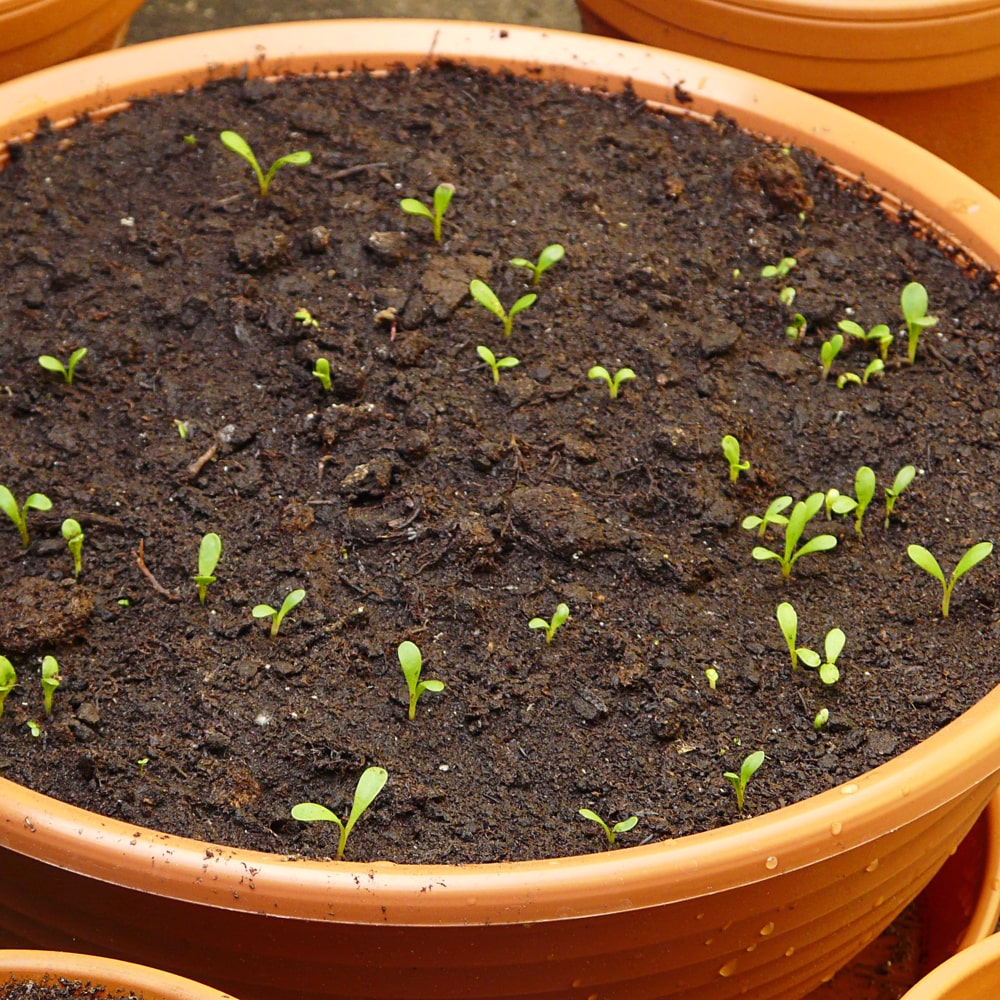
Small Stevia seedlings in a pot.
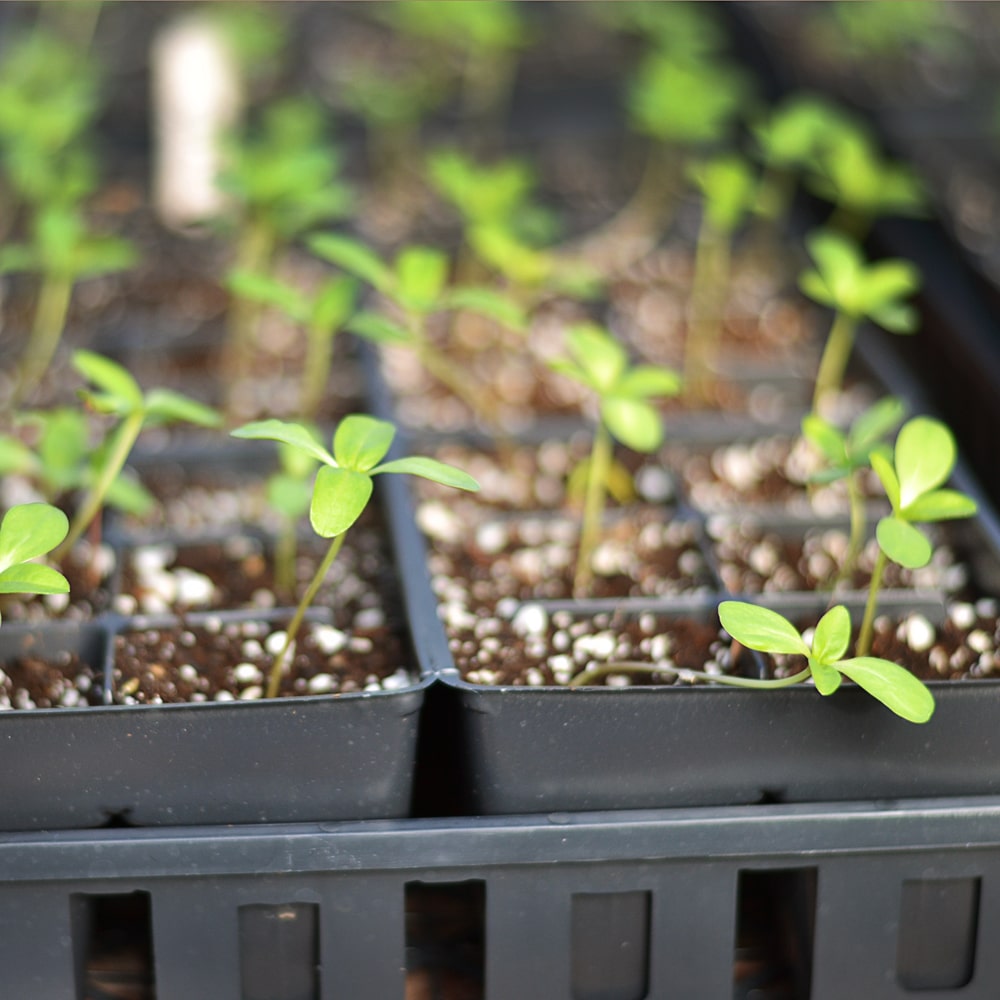
Pricked Stevia seedlings in containers.
From now on, the tender little plants can be pricked out and replanted in the open or in pots. When planting outdoors, always keep a minimum distance of 30 centimetres to each plant. If you prefer planting in pots, you should choose a diameter of at least 20 to 30 centimetres. Because the Stevia plant has particularly shallow but strong roots, the pot need not be too deep.
Note: From a purely legal point of view, the cultivation of Stevia as a foodstuff is not permitted in the European Union. Udo Kienle from the University of Hohenheim has been studying the plant Stevia rebaudiana for many years and explains: “Although Steviolglycosides are now permitted as food additives, the plant Stevia per se is not approved as a food. Despite these circumstances, the plant is sold at weekly markets or nurseries. However, it is always labelled as an ornamental or potted plant and in most cases, it is not recommended to consume its ingredients. These indications are due to legislation.
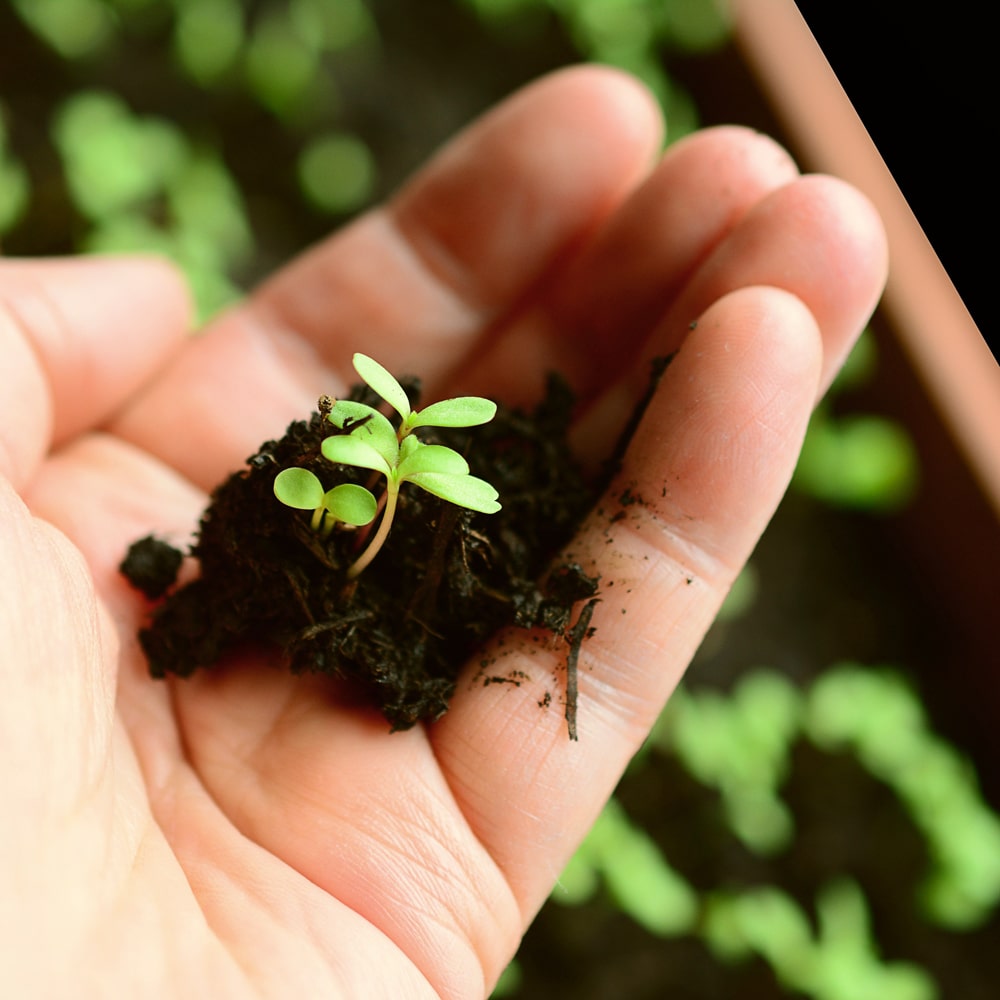
Stevia seedlings in a hand.
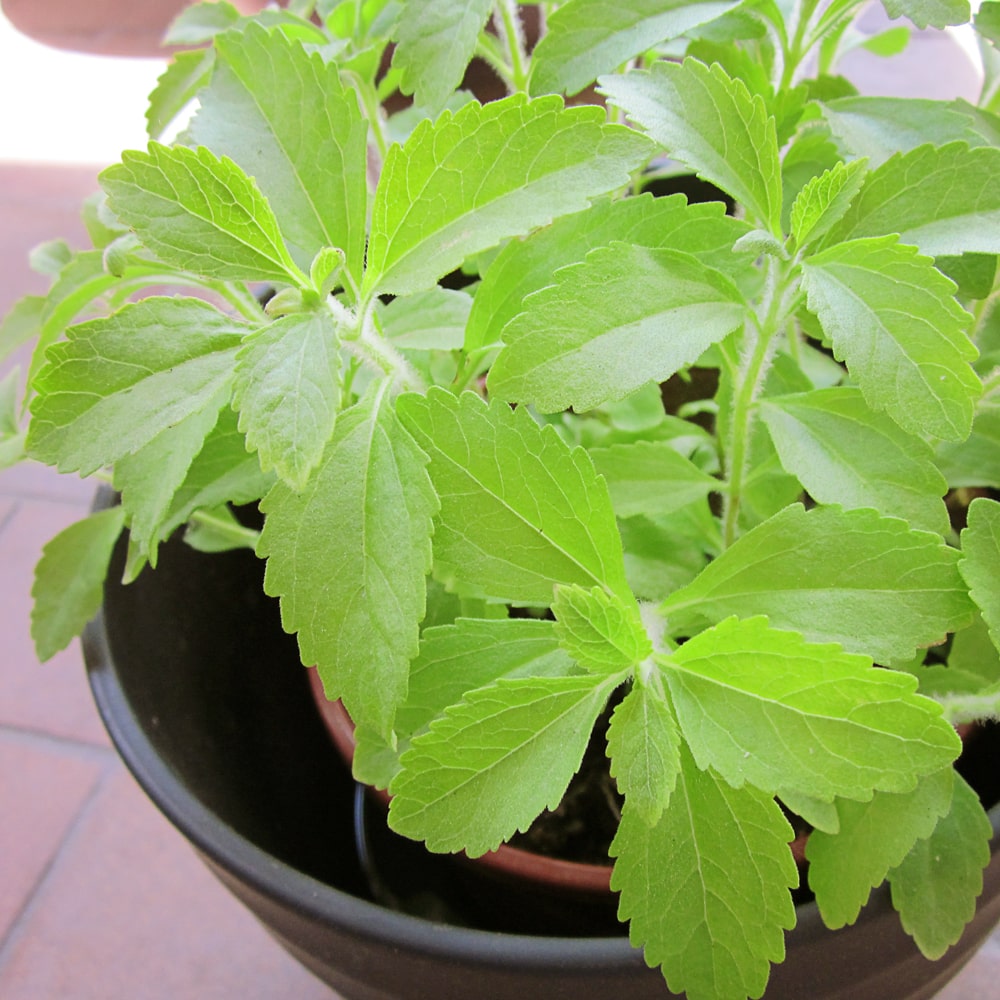
Young Stevia plant in a pot.
Care
Stevia rebaudiana is very sensitive to drought and only surface water reaches you with its shallow roots. For this reason, it is very important to water the plant sufficiently, especially in summer. Only with nutrient-poor soil or in a pot with additional nutrients such as horn shavings, compost or slow-release fertiliser can the plant develop numerous leaves. However, you should be careful when fertilising, as plants are much more susceptible to pests if over-fertilised. The Stevioside content within the leaves is also reduced when over-fertilising with nitrogen. Before using fertiliser, it is better to carry out an analysis of the soil if you are unsure about the nutrient content.
Regular pruning can promote growth and make the plant more vigorous, more stable and less prone to shoot breakage. From August onwards the plant should not be pruned because of reduced growth.
Hibernation
As Stevia rebaudiana is not hardy in our latitudes – apart from some mild wine-growing regions – it is usually cultivated as an annual crop.
However, the plant can overwinter in a cellar, room or conservatory without any problems. The optimum ambient temperature for wintering is about 13 degrees Celsius. It is normal for the upper shoots of Stevia to die. This process also takes place in many other herbaceous plants.
In order to enable a strong budding in spring, the dead shoots can be cut off near the ground. In winter, it is sufficient to water the Stevia plant about once a month to avoid drying out the substrate and roots. The brighter the wintering location, the faster the plant will sprout again in spring. Stevia rebaudiana can only be planted outdoors when the outside temperature has reached a constant two-digit value again.
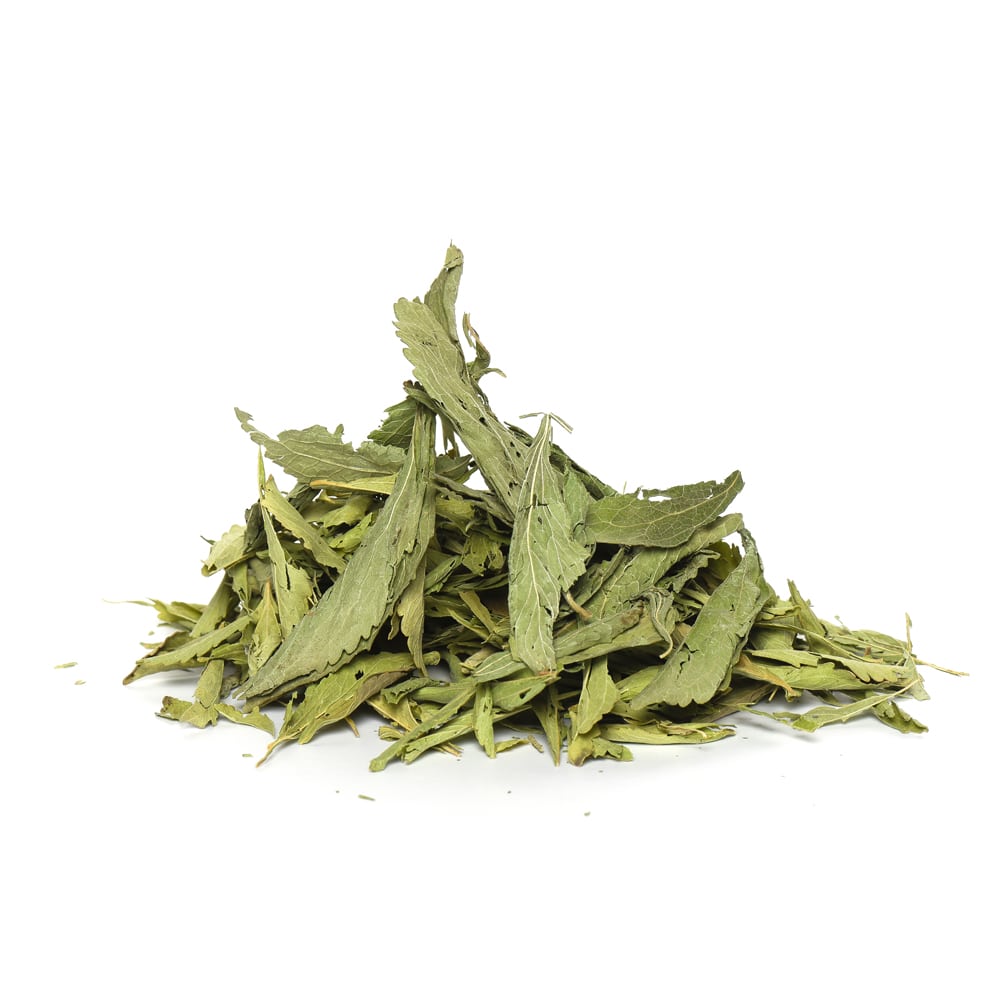
Stevia leaves dried.
Harvest
September, the time before the plant starts flowering, is the ideal harvesting period. The leaves can be conserved by freezing or drying them, or they can be processed directly fresh.
Stevia as a sugar alternative
Compared to regular household sugar, the leaves of Stevia are about 40 times sweeter. The pure Stevioside of the plant has even 300 times the sweetening power. In addition to its classic use for tea and mate, the sweetener is often used in baking or cooking, because Stevia is extremely heat-stable. It is the two main components Rebaudioside A and Stevioside that give the leaves their special sweetness. The molecule contained in these two substances is so stable that it leaves the human body without any changes through the digestive tract. For this reason, no release of the hormone insulin is produced, nor is the blood sugar level affected in any way. This makes the sweetener especially interesting for diabetics. Because Stevia has a light, liquorice-like aftertaste, not everyone likes to use this sugar substitute.
Although the natural sweetener was not approved as a food additive in the European Union until 2011, Stevia is not a novel product. It is believed that the native inhabitants of South America have been using the plant for centuries for drinks and medicine. In the meantime, the sweetener is also becoming increasingly popular in Asia. In Japan, for example, Stevia has been used since the 1970s for toothpaste, cakes, sweets and of course for sweetening hot drinks and desserts.
Besides the USA, the use of steviol glycosides has been the norm for years in Australia, the EU, Israel, New Zealand, Switzerland and many other countries.
The ingredients of Stevia leaves are completely calorie-free and tooth-friendly. In addition, the sweetener does not affect insulin and blood sugar levels. Despite these properties, the steviol glycosides contained in the leaves have about 300 times the sweetening power of conventional sugar. For this reason, the consumption of pure steviol glycosides, especially in higher doses, is neither edible nor recommended. In the meantime, however, there are mixed products that consist of both stevia extract and real sugar.
Since 2nd December 2011, steviol glycosides have been approved as food additives in the EU and are available on the market. However, Udo Kienle warns against some details that should be taken into account when buying – especially on the internet. “Stevia products in any form, which are available in supermarkets, drugstores or organic shops, can be bought without hesitation, because these products are subject to strict regulations, like all foods in Germany”.
Always pay attention to the ingredients. Many Stevia products are offered with flavours, chemical sweeteners or fructose and dextrose. These additives are usually intended to conceal or mask the taste of inferior Stevia raw materials.
However, one should be careful when buying products on the internet: “Whoever buys this always takes a risk, because they don’t know what they are getting and whether the products have been sufficiently tested.” Most important is the so-called purity content of the Steviolglycosides. If this value is lower than 95%, it is a product that is not authorised in the European Union. The same applies to products that are on sale. Especially dangerous are stevia powders, stevia tabs or stevia liquid sweeteners that do not have any content information at all. In this case, it is strongly advised not to buy them.
The Stevia plant is even said to have a medicinal effect – the ingredients are believed to be anti-inflammatory, anti-hypertensive, antibacterial, antioxidant and even anti-cancer. Stevia is also said to have a healing effect on kidney and intestinal diseases.
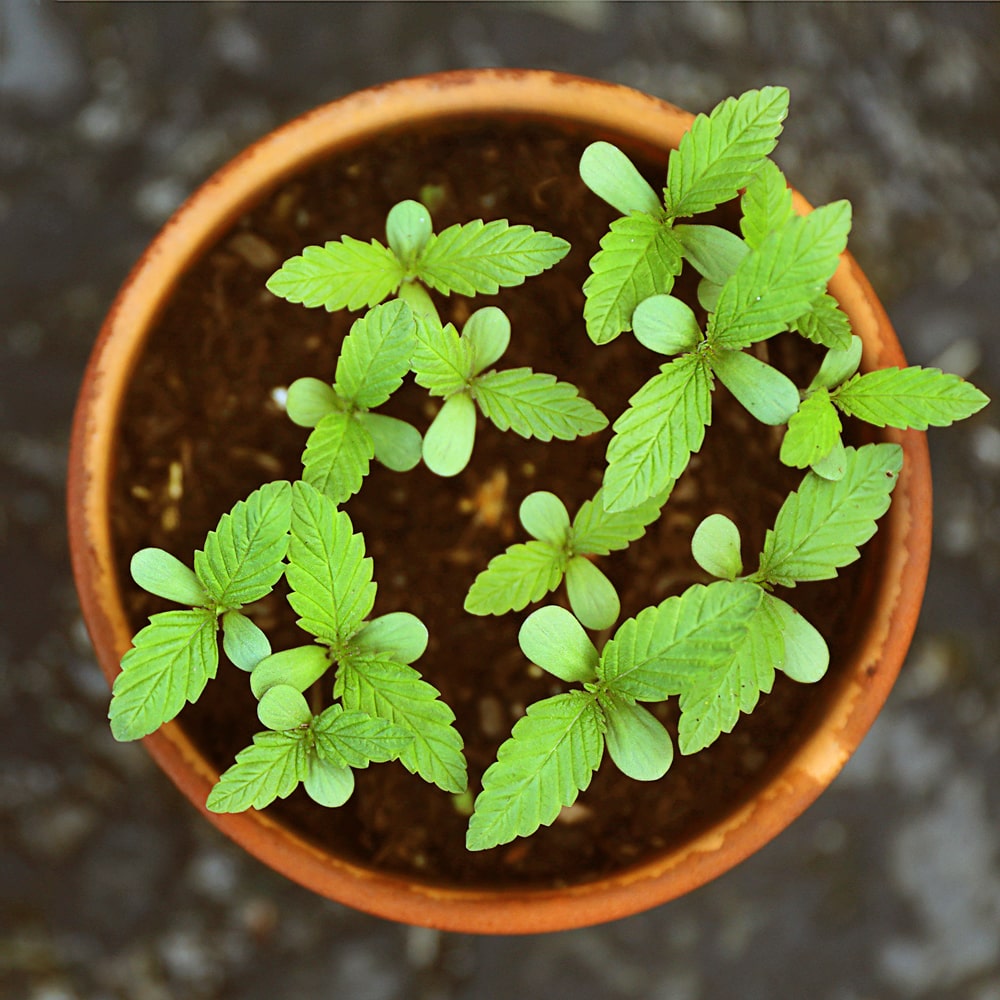
Stevia varieties
Currently, only a few varieties of the stevia plant are commercially available. As a rule, shops only offer seeds, while specialist herbal mail-order companies often sell young plants. These are usually the varieties “Stevia rebaudiana Bertoni” or “Stevia rebaudiana Criolla”. In contrast to “Stevia rebaudiana Bertoni”, the latter forms rather large leaves. Overall, “Stevia rebaudiana” is a rather compact plant that is perfectly suited for growing in pots.
Reproduction
Stevia can be propagated either by sowing or by cuttings. When sowing, however, it should be noted that only a few of the seeds actually germinate. When propagating by cuttings, the seed must be watered until it develops its own roots. After that, the cuttings can be planted and must be watered daily. After the successful transplantation and a strong development of roots, the transplantation can take place in the field.
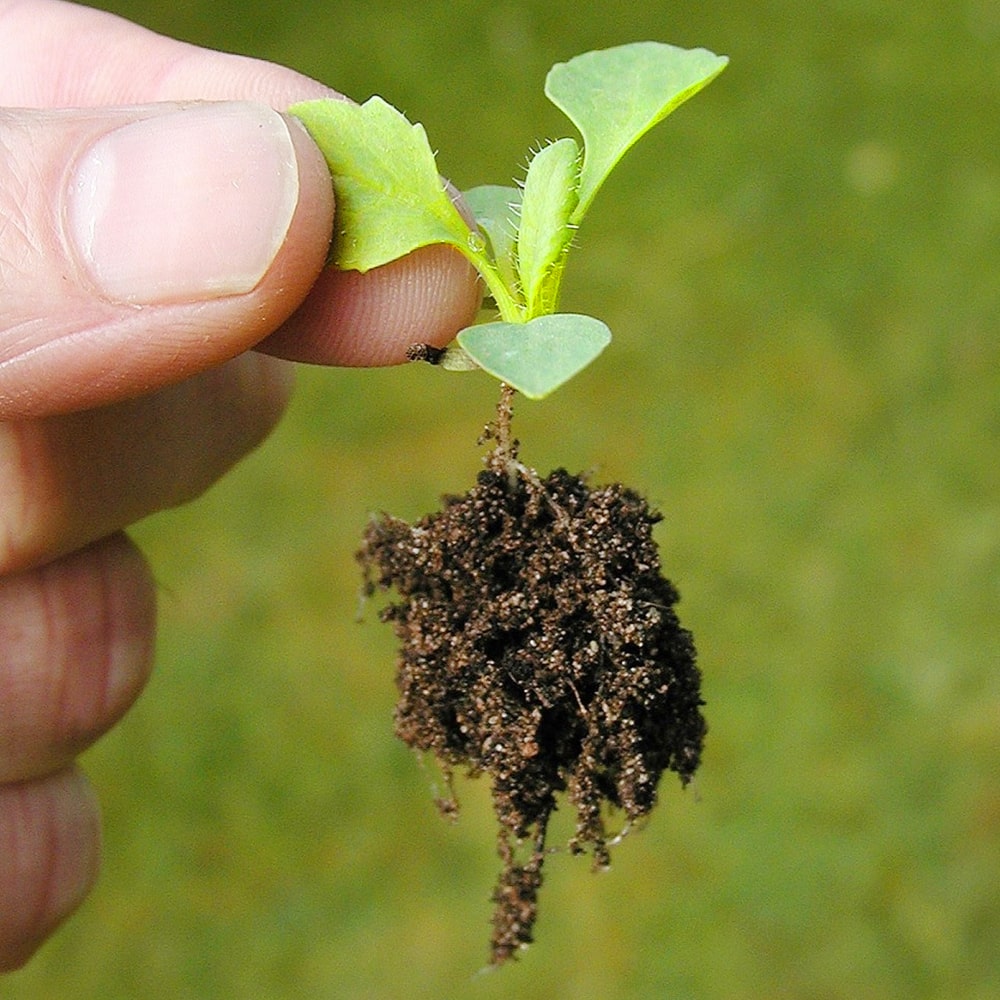
Small Stevia plant, seedling in fingers.
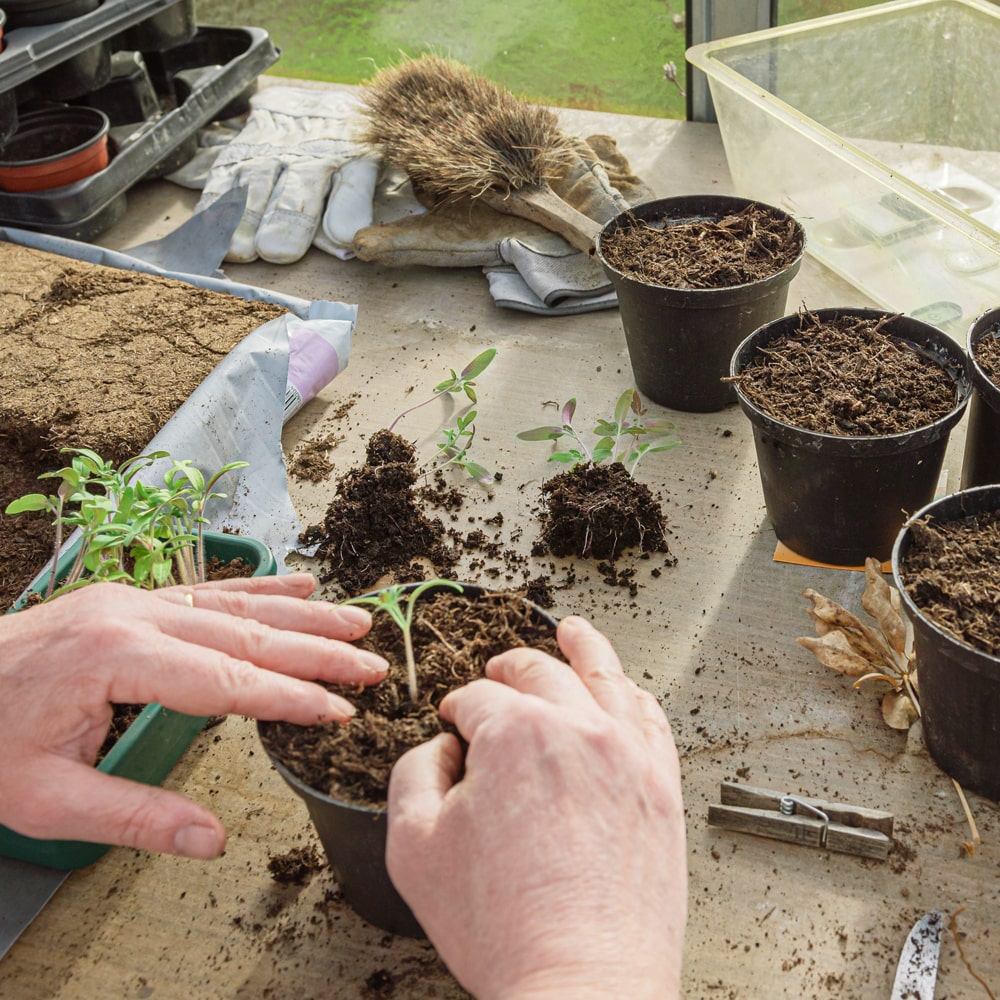
Prick Stevia seedlings and plant them in pots.
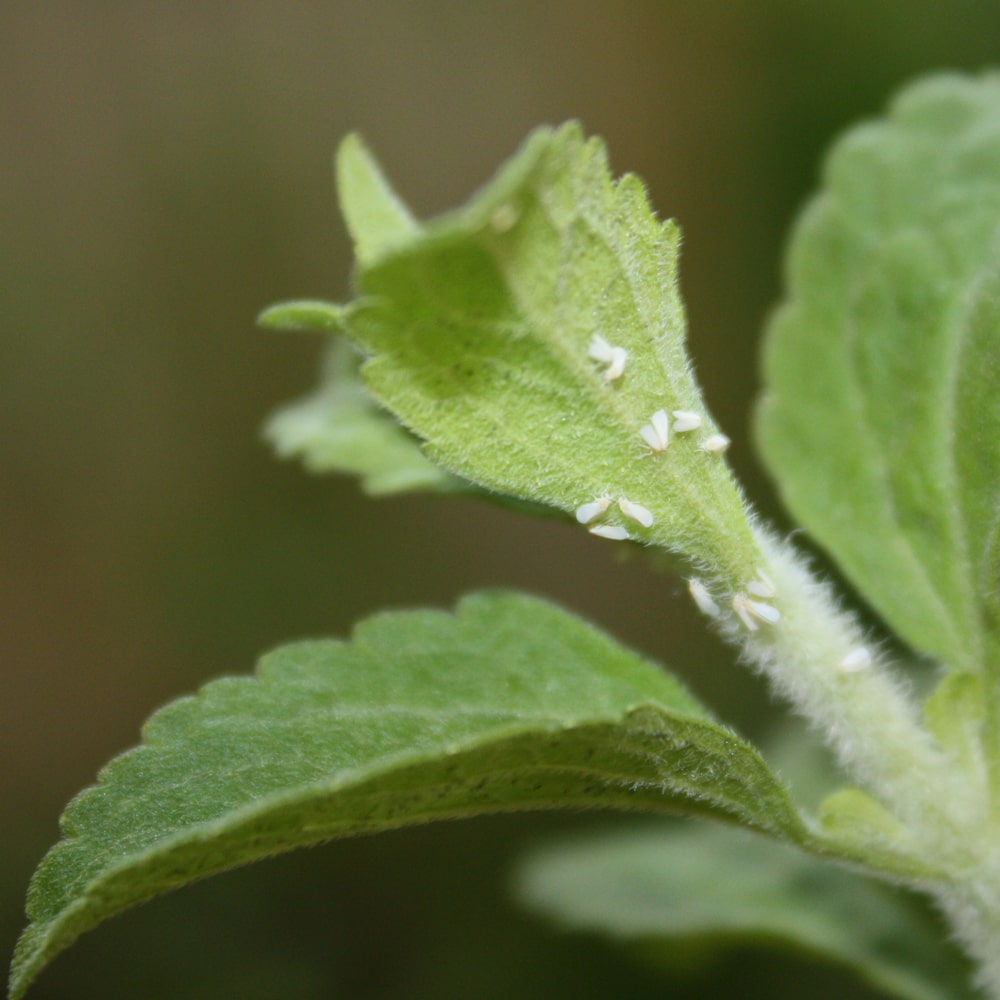
Pests and diseases Stevia plant with whitefly.
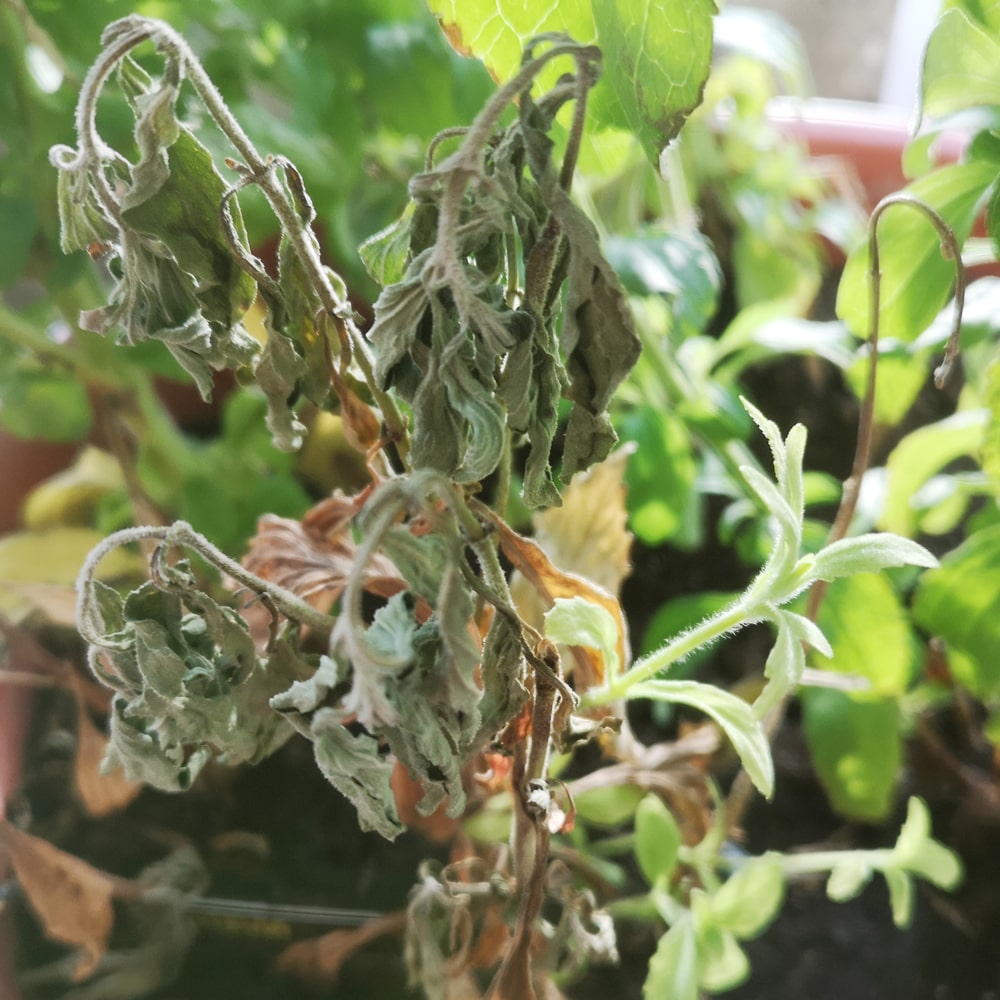
Pests and Diseases on Stevia Plant with Wilt Disease.
Pests and diseases
Provided the requirements of Stevia are met, it is a rather robust plant. However, if the nutrient content or moisture of the substrate is too high, the risk of fungal diseases such as rust, mildew, black spot disease or collar rot increases enormously. The Stevia plant is also very popular among some caterpillars, snails, wireworms and of course aphids.